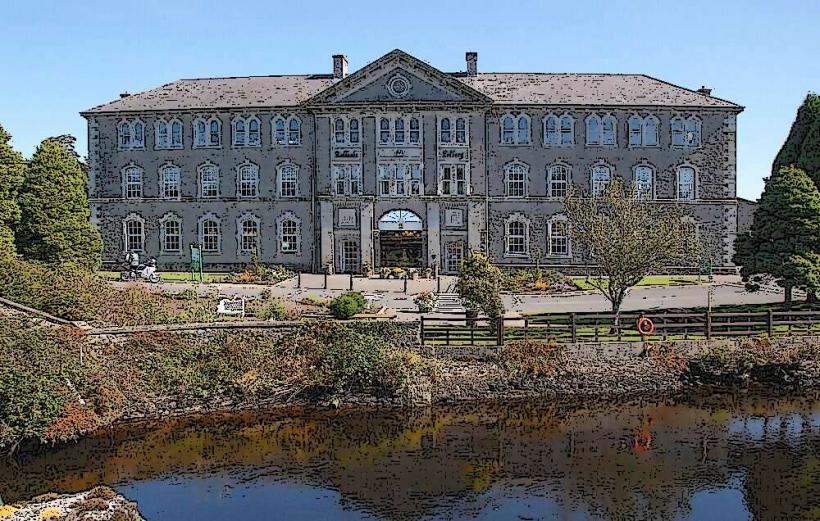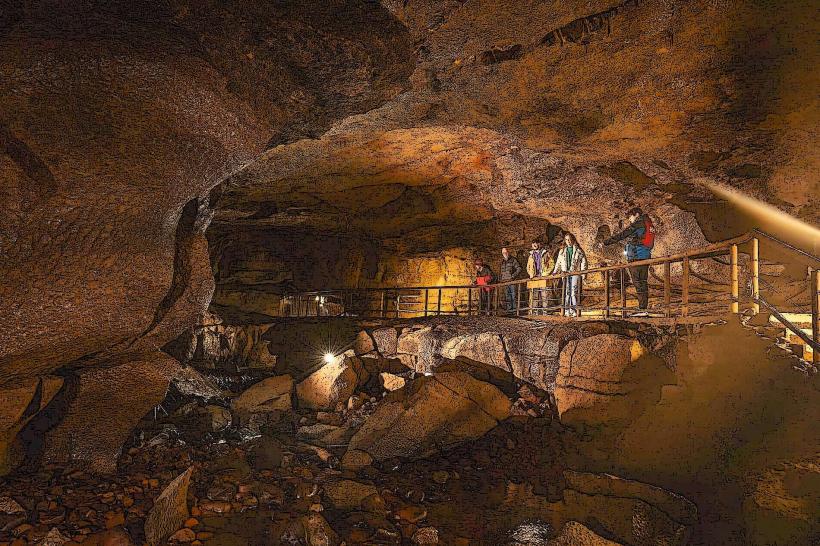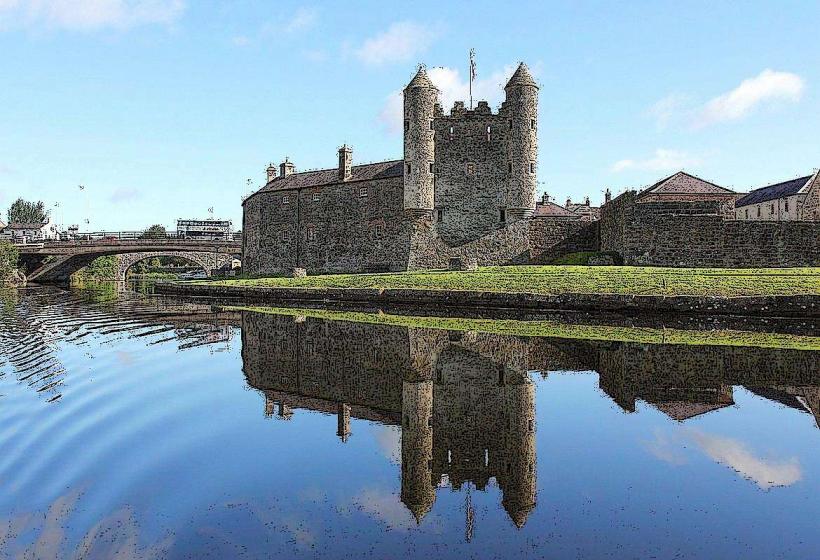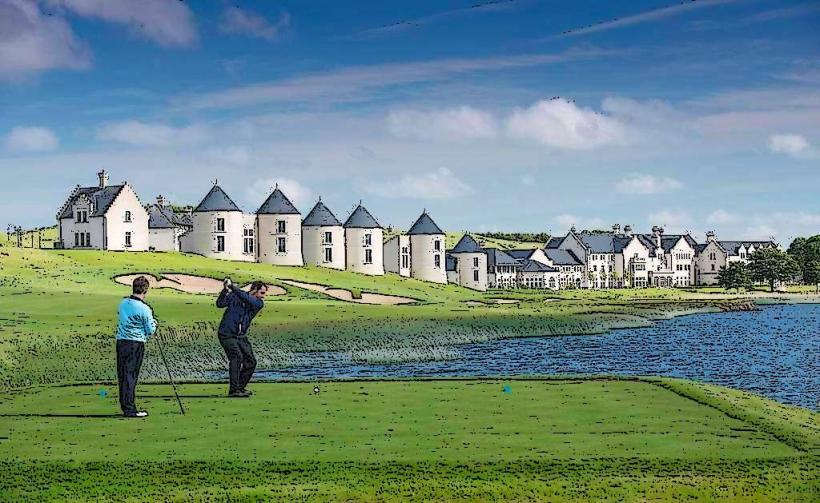Information
Landmark: Devenish IslandCity: Fermanagh
Country: Ireland
Continent: Europe
Devenish Island is one of the most historically significant and picturesque islands in Lough Erne, County Fermanagh, Northern Ireland. This small island, steeped in history, is renowned for its ancient monastic ruins, stunning natural beauty, and peaceful surroundings. The island is a popular destination for history enthusiasts, nature lovers, and anyone seeking a tranquil escape. Visitors can explore its well-preserved historical sites, enjoy scenic views, and immerse themselves in the rich heritage of the area.
1. Historical Significance
- Monastic Site: Devenish Island was once home to a prominent monastic settlement, founded in the 6th century by Saint Molaise, a Christian hermit and missionary. The island became an important center of religious life in early Christian Ireland, with the monastery attracting monks, scholars, and pilgrims. The site was continuously occupied and developed for several centuries until the 16th century.
- Viking Raids and Decline: Like many monastic sites in Ireland, Devenish Island suffered during the Viking invasions of the 9th and 10th centuries. While the island’s religious significance waned over time, it continued to be a place of pilgrimage and local importance. The monastic ruins on Devenish Island stand as a testament to Ireland’s early Christian heritage.
2. Key Features of Devenish Island
- The Round Tower: One of the island’s most famous landmarks is its round tower, which is considered one of the best-preserved examples of its kind in Ireland. The round tower stands about 10 meters (33 feet) tall and was used for a variety of purposes, including as a bell tower, a place of refuge during attacks, and a storage area for sacred relics. The tower's strategic position offers a panoramic view of the surrounding lakes and islands.
- The Church Ruins: The ruins of several church structures are scattered across the island. The St. Molaise Church, a 12th-century building, is the most prominent among them. The church was constructed during the medieval period and is known for its simple yet beautiful stone architecture. Visitors can explore the remaining walls and imagine the island's former religious life.
- High Crosses and Carvings: Devenish Island is home to some beautiful high crosses, which are important examples of early Christian art and craftsmanship. These crosses, dating from the 9th to 12th centuries, are adorned with intricate carvings depicting biblical scenes and Christian symbols. They offer insight into the island’s role in the spread of Christianity across Ireland during the medieval period.
- Cemetery: The island is also the site of an ancient cemetery, with many weathered gravestones that mark the resting places of former monks and pilgrims. The cemetery is still in use today for occasional burials, adding to the island’s living history.
3. Visiting Devenish Island
- Boat Access: Devenish Island is accessible by boat, with regular ferry services operating from Trory Point on the mainland, near Enniskillen. Visitors can take short boat rides to the island, which provides a chance to appreciate the serene beauty of Lough Erne from the water.
- Walking Trails: Once on the island, visitors can explore its small but fascinating walking trails, which take them past the historical ruins, through grassy fields, and along the shores of the lake. The island is peaceful and often uncrowded, making it a perfect place for reflection and discovery.
- Visitor Information: While there are no extensive facilities on the island, there is a small information panel near the main ruins that provides insight into the island's history and its significance in early Christian Ireland. The nearby town of Enniskillen offers additional amenities, including cafes, restaurants, and accommodation.
4. Archaeological Findings
- Excavations: Archaeological excavations have uncovered numerous artifacts and structural remnants on Devenish Island, helping to piece together its history. These include early Christian grave slabs, stone carvings, and evidence of monastic life, such as pottery and tools used by the monks. The island's historical significance continues to be explored, making it an important site for archaeologists and historians.
- Early Christian Art: The high crosses and carved stones found on Devenish Island reflect the rich artistic traditions of early Christian Ireland. The carvings are considered important examples of Irish Christian art and provide valuable insights into the island's role in the spread of Christianity.
5. Natural Beauty
- Scenic Views: The island itself is surrounded by the stunning waters of Lower Lough Erne, and visitors can enjoy breathtaking views of the lake and surrounding countryside. The island’s peaceful atmosphere, combined with its historical significance, creates a serene and contemplative environment for visitors.
- Wildlife: The island is home to a variety of bird species, particularly waterfowl, which can be observed around the shores of the island or from the boat as it approaches. The surrounding Lough Erne area is also rich in wildlife, with opportunities for birdwatching, fishing, and nature walks.
- Flora: The island’s landscape features a mix of grassy fields, scrub, and woodland, which contribute to its natural beauty. The flora of the island adds to the tranquil atmosphere, especially in the spring and summer when wildflowers are in bloom.
6. Cultural and Spiritual Significance
- Pilgrimage Site: Devenish Island was once a prominent pilgrimage site, and it continues to hold spiritual significance for many. The site’s historical connection to Saint Molaise and its role in early Irish Christianity have made it an important religious landmark. Today, it remains a place for reflection and quiet contemplation, drawing visitors from both Ireland and abroad.
- Local Legend: Local legends and stories are tied to Devenish Island, particularly around the figure of Saint Molaise. According to tradition, the saint was known for his piety and healing powers. Stories of his life and miracles continue to be passed down through generations, adding to the island’s mystique.
7. Nearby Attractions
- Enniskillen: The island is located near the town of Enniskillen, which offers several attractions, including Enniskillen Castle, The Fermanagh County Museum, and the Inniskillings Museum. The town itself is a lovely place to explore, with plenty of cafes, shops, and historical sites.
- Lough Erne: The entire Lough Erne region is rich in history and natural beauty. Visitors can explore the lakes by boat, visit nearby islands, or enjoy walking and hiking around the lakeshores. The area is also home to several other historic sites and attractions, including Devenish Island's sister island, White Island, which is famous for its early Christian carved figures.
Conclusion
Devenish Island offers a rare opportunity to step back in time and experience the spiritual and historical significance of early Christian Ireland. With its well-preserved monastic ruins, scenic views, and peaceful atmosphere, Devenish Island remains a must-visit destination for anyone exploring the heritage and natural beauty of County Fermanagh. Whether you're interested in history, archaeology, or simply enjoying the tranquil surroundings, Devenish Island provides a unique and enriching experience.





